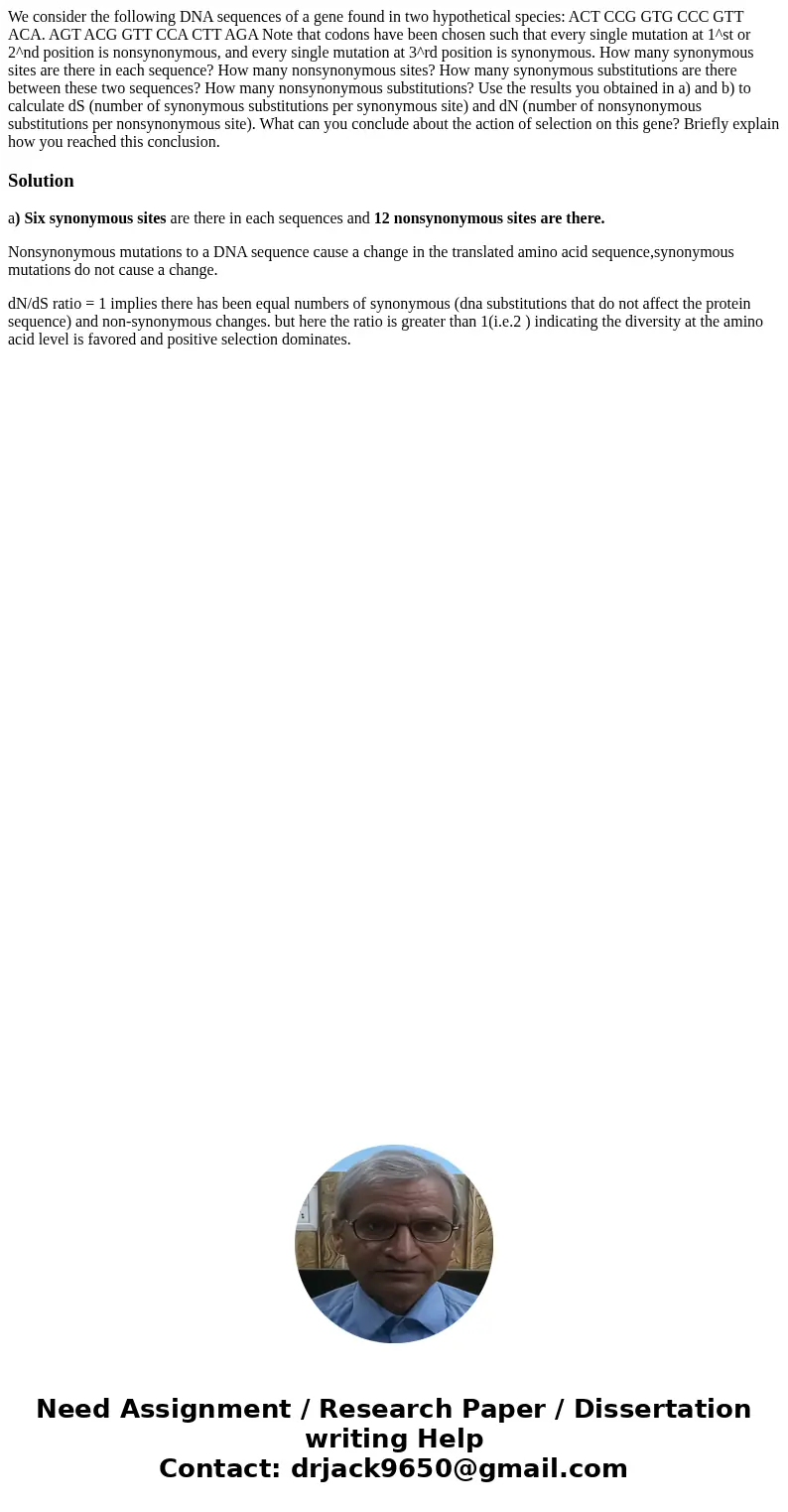We consider the following DNA sequences of a gene found in t
We consider the following DNA sequences of a gene found in two hypothetical species: ACT CCG GTG CCC GTT ACA. AGT ACG GTT CCA CTT AGA Note that codons have been chosen such that every single mutation at 1^st or 2^nd position is nonsynonymous, and every single mutation at 3^rd position is synonymous. How many synonymous sites are there in each sequence? How many nonsynonymous sites? How many synonymous substitutions are there between these two sequences? How many nonsynonymous substitutions? Use the results you obtained in a) and b) to calculate dS (number of synonymous substitutions per synonymous site) and dN (number of nonsynonymous substitutions per nonsynonymous site). What can you conclude about the action of selection on this gene? Briefly explain how you reached this conclusion.
Solution
a) Six synonymous sites are there in each sequences and 12 nonsynonymous sites are there.
Nonsynonymous mutations to a DNA sequence cause a change in the translated amino acid sequence,synonymous mutations do not cause a change.
dN/dS ratio = 1 implies there has been equal numbers of synonymous (dna substitutions that do not affect the protein sequence) and non-synonymous changes. but here the ratio is greater than 1(i.e.2 ) indicating the diversity at the amino acid level is favored and positive selection dominates.

 Homework Sourse
Homework Sourse